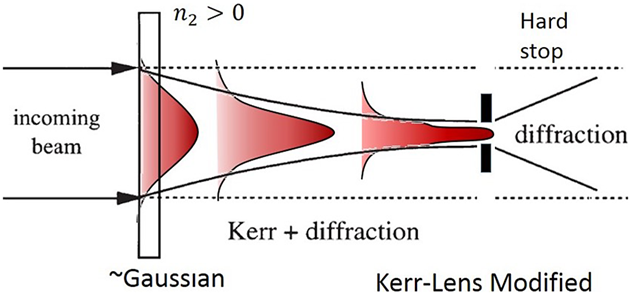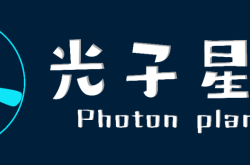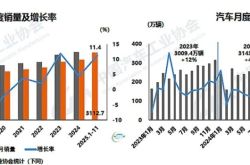Revolutionizing Pulse Contrast Enhancement with Self-Focusing: A Novel Approach for Ultrafast Laser Systems
![]() 04/21 2025
04/21 2025
![]() 909
909
In the realm of ultrafast lasers, pulse contrast stands as a pivotal parameter influencing the success of high-power laser experiments. Defined as the ratio of the main pulse peak's intensity to its background noise (comprising nanosecond or picosecond prepulses), pulse contrast is crucial. During intense field physics experiments, such as the interaction between ultra-intense lasers and solid targets or laser fusion, low-contrast pedestal pulses can prematurely ionize target materials, leading to suboptimal experimental outcomes and deviations from expectations. Thus, enhancing pulse contrast is imperative for high-power laser systems.
Traditional pulse cleaning techniques, including cross-polarized wave (XPW), optical parametric amplification (OPA), and plasma mirrors (PM), can effectively boost contrast but often grapple with complexities like intricate setups, low conversion efficiencies, and significant energy losses. This paper introduces a novel method for pulse contrast enhancement leveraging the self-focusing effect. By utilizing a Kerr lens to induce self-focusing in a thin glass medium and integrating spatial filtering to eliminate low-intensity pedestal noise, this method enhances pulse contrast [1]. Its simplicity, low cost, and minimal energy loss make it a promising approach for pulse cleaning in high-power laser systems.

Figure 1: Schematic diagram of the experimental principle [1]
The core concept of this method involves using the Kerr lens effect to induce time-dependent spatial variations, followed by spatial selective filtering through an iris. The fundamental working principle is depicted in Figure 1:
- The high-intensity pulse's central portion induces nonlinear self-focusing in the glass medium, causing the beam angle to narrow.
- The low-intensity background noise, due to its weaker intensity, remains largely unaffected by the Kerr effect, retaining its initial divergence angle.
- Upon passing through the spatial filter (e.g., an iris), only the focused portion is transmitted, while the diverging background noise is filtered out, resulting in temporal pulse cleaning.
- This process occurs spontaneously, eliminating the need for additional pump light sources or external control, thus simplifying implementation.
A numerical model based on the ABCD matrix and Gaussian beam propagation formula was developed to calculate the nonlinear focal length under various parameters and the spot diameter's temporal variation. The model predicts a pulse contrast enhancement of 0.5-2.5 orders of magnitude, with energy efficiencies ranging from 25%-90%, contingent on the chosen experimental parameters.
To validate the theoretical model, the research team established the experimental setup illustrated in Figure 2. An ytterbium-doped fiber CPA system generates 450 fs pulses with a central wavelength of 1030 nm and a pulse energy of 10 μJ. The glass medium is uncoated fused silica, and the spatial filter comprises an iris with a diameter of 400 μm.

Figure 2: Schematic diagram of the experimental setup [1]
The experimental results in Figure 3 demonstrate that the initial pulse contrast was approximately [value], and after passing through the Kerr lens and spatial filtering, the contrast was enhanced to the order of [value], representing an improvement of 20 dB. With a 400 μm iris, the pulse energy efficiency was 40% (the theoretical maximum can reach 48% with uncoated glass). The experimental results closely align with the numerical simulations, confirming the method's feasibility. The authors also explored the impact of different iris sizes. Compared to traditional contrast enhancement techniques, this method exhibits lower energy loss, simpler implementation, and suitability for contrast optimization in high-power CPA systems.

Figure 3: Pulse contrast before (blue) and after (orange) the Kerr effect and spatial filtering [1]
In conclusion, this paper introduces a novel pulse contrast enhancement method combining the Kerr lens effect with spatial filtering. This method is straightforward and easy to implement, requiring only a thin glass medium and an iris, without additional light sources or complex synchronization equipment. It also boasts high energy efficiency, maintaining up to 90% under optimal conditions, which is superior to traditional methods like XPW, OPA, and PM. Experiments have confirmed that pulse contrast can be improved by two orders of magnitude, providing a novel pulse cleaning solution for ultra-intense ultrafast laser experiments. Looking ahead, this method holds potential for further optimization to accommodate higher power and shorter pulse applications.
References:
[1] Refaeli Z, Marcus G, Shamir Y. A simple method for pulse contrast enhancement via self-focusing [J]. High Power Laser Science and Engineering, 2024, 12: e18.





